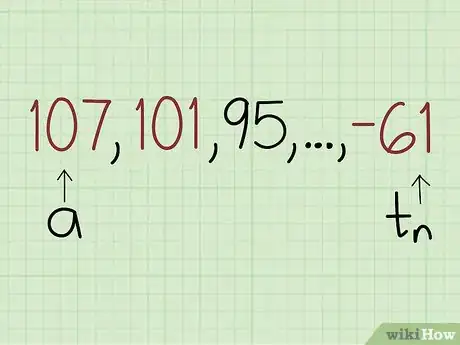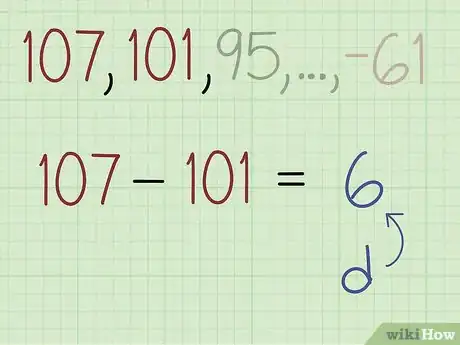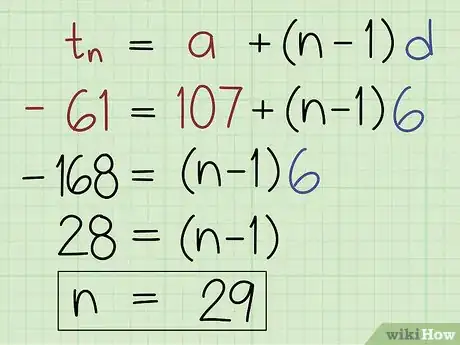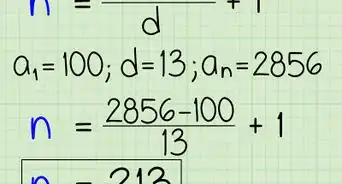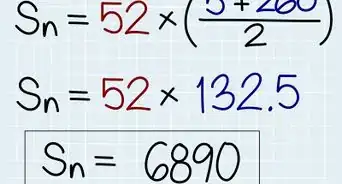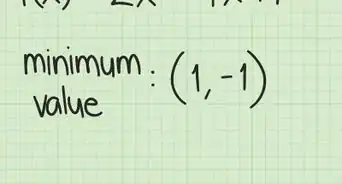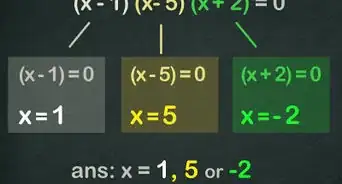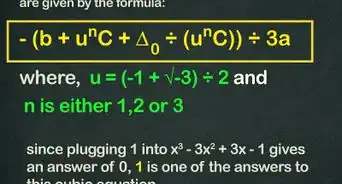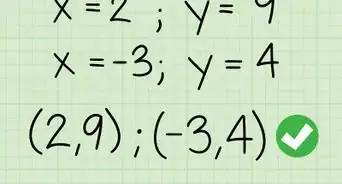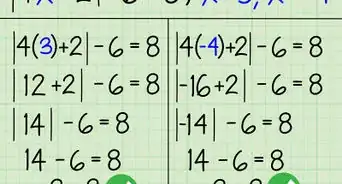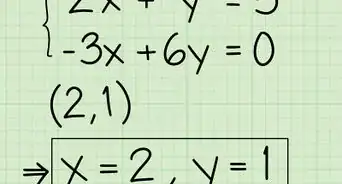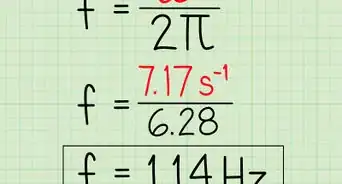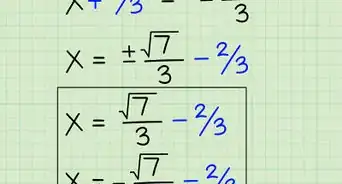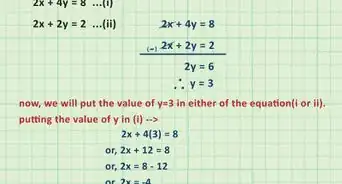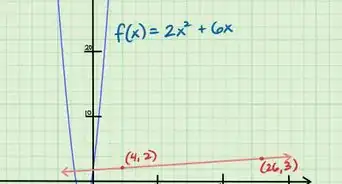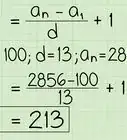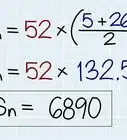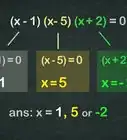This article was co-authored by wikiHow staff writer, Sophia Latorre. Sophia Latorre is a Content Manager on the wikiHow team. Before joining wikiHow, Sophia worked as a technical editor and was published in six International Energy Agency (IEA) Wind Annual Reports. Now, she writes, edits, and reviews articles for the wikiHow Content Team, working to make the content as helpful as possible for readers worldwide. Sophia holds a BA in English from Colorado State University.
This article has been viewed 439,650 times.
Learn more...
Finding the number of terms in an arithmetic sequence might sound like a complex task, but it’s actually pretty straightforward. All you need to do is plug the given values into the formula tn = a + (n - 1) d and solve for n, which is the number of terms. Note that tn is the last number in the sequence, a is the first term in the sequence, and d is the common difference.
Steps
-
1Identify the first, second, and last terms of the sequence. Typically, to solve a problem like this, you’ll be given the first 3 or more terms as well as the last term.[1]
- For example, you may have the following sequence: 107, 101, 95…-61. In this case, the first term is 107, the second term is 101, and the last term is -61. You need all of this information to solve the problem.
-
2Subtract the first term from the second term to find the common difference. In the example sequence, the first term is 107 and the second term is 101. So, subtract 107 from 101, which is -6. Therefore, the common difference is -6.[2]Advertisement
-
3Use the formula tn = a + (n - 1) d to solve for n. Plug in the last term (tn), the first term (a), and the common difference (d).[3] Work through the equation until you’ve solved for n.[4]
- For example, start by writing: -61 = 107 + (n - 1) -6. Subtract 107 from both sides so you’re left with -168 = (n - 1) -6. Then, divide both sides by -6 to get 28 = n - 1. Finish by adding 1 to both sides so that n = 29.
Community Q&A
-
QuestionCan I use the formula (A - L/d) + 1 for finding n?
 DonaganTop AnswererAs explained above, n = [(L - A) / d] + 1.
DonaganTop AnswererAs explained above, n = [(L - A) / d] + 1. -
QuestionIf the difference is not given, how do I find the difference?
 DonaganTop AnswererSubtract any term from the one that follows it.
DonaganTop AnswererSubtract any term from the one that follows it. -
QuestionIf the first term and last term of an arithmetic progression are 5 and 89, how do I find the number of terms?
 DonaganTop AnswererYou can't without knowing the difference between consecutive terms.
DonaganTop AnswererYou can't without knowing the difference between consecutive terms.
Warnings
- Do not confuse the difference between the first and last term with the common difference.⧼thumbs_response⧽
